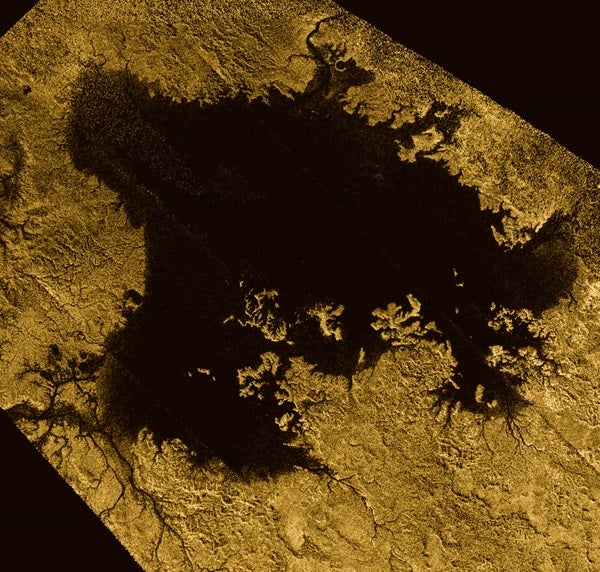Titan’s hydrocarbon lakes may occasionally erupt with dramatic patches of bubbles according to a recent study funded by NASA.
Researchers at NASA’s Jet Propulsion Laboratory (JPL) simulated Titan’s conditions and found that changes in temperature can cause nitrogen to dissolve into a freezing methane rain that ends up pooling into bodies of hydrocarbons.
Changing temperatures, both hot and cold, as well as air pressure can all play a role in separating nitrogen out of the hydrocarbon solution, called exsolution, which in turn causes the bubbles. NASA’s Cassini spacecraft showed that composition in Titan’s bodies of hydrocarbon can vary, with some containing more ethane and some with more methane.
Michael Malaska of JPL, who led the study, said in a press release, “Our experiments showed that when methane-rich liquids mix with ethane-rich ones — for example from a heavy rain, or when runoff from a methane river mixes into an ethane-rich lake — the nitrogen is less able to stay in solution.”
Cassini had also noticed a patch of land that would appear, disappear, and in one instance, reappear in the seas of Titan. The area is fondly called the “magic islands” and, luckily, this research may be the answer for those mysterious bodies of water.
“Thanks to this work on nitrogen’s solubility, we’re now confident that bubbles could indeed form in the seas, and in fact may be more abundant than we’d expected,” said Jason Hofgartner of JPL, who serves as a co-investigator on Cassini’s radar team and was a co-author of the study.
Exsolution can cause some issues should a robotic probe ever make it to Titan to test the waters. Heat from the probes could increase the amount of bubbles and make it difficult to navigate the probe or even keep it upright.
Cassini has given NASA plenty of helpful information about Titan over the past 20 years, but sadly the spacecraft’s next close flyby of Titan on April 22 will be its last. This flyby will be the start of Cassini’s end, bending the craft’s course for a series of 22 plunges through Saturn and its rings before ultimately crashing into the ringed planet.










